‘Draco Alchemicus’ “Is A Retelling Of The Greatest Fairy Tale In The English Language” (Exclusive)
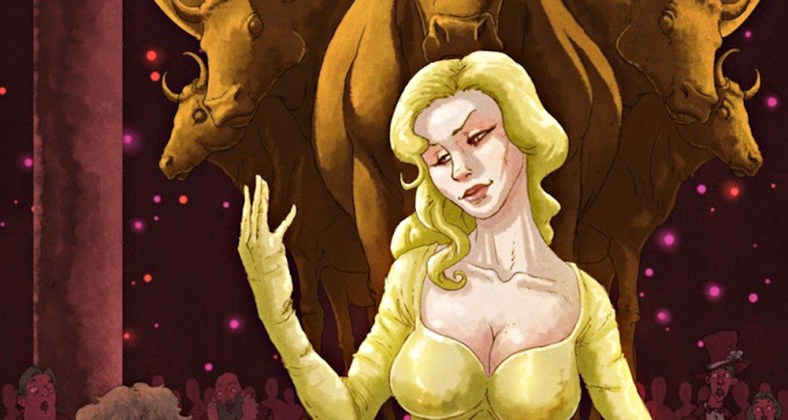
“Reimagined for a modern audience” is a phrase that no one wants to hear from Hollywood. However, retelling stories is as old as storytelling itself and is fascinating when it hits the mark. And Rachel Fulton Brown provided Bounding Into Comics with an exclusive interview about how Draco Alchemicus retells Edmund Spenser’s The Faerie Queene. The collaborative, illustrated project comes from the Dragon Common Room and the fact that it more than tripled its original crowdfunding goal shows that fans are quite excited about it.
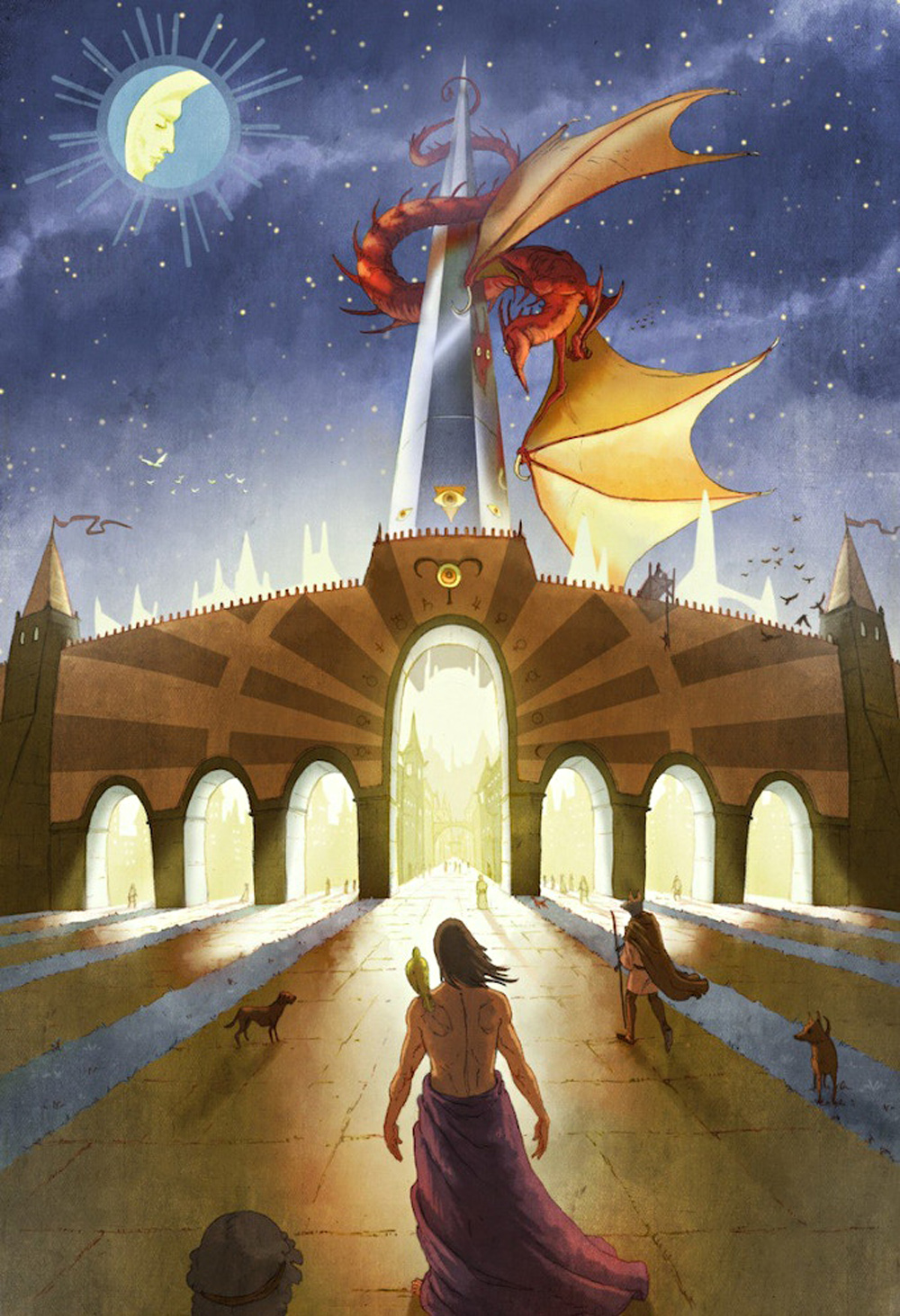
‘Draco Alchemicus’ (2023), illustration by Zé Nuno Fraga
RELATED: In ‘The Wise Of Heart,’ A Man Faces Unthinkable Consequences For Stating An Unspeakable Truth
“Draco Alchemicus is a retelling of the greatest fairy tale in the English language modeled on Edmund Spenser’s The Faerie Queene,” Fulton Brown told BIC. “Its hero Damian Stone arrives before the gates of a great electrical City in a shining cloud of pigeons where he sings of his quest to recover his bride.
“Like the Red Knight in Spenser’s The Faerie Queene, Damian must battle a dragon, but unlike Spenser’s Una, Damian’s bride doesn’t realize she needs rescuing, nor is she interested in being rescued. She, like the City, is caught up in a psychedelic psychosomatic rave, fueled by the most powerful drugs the dragon can offer. Damian’s challenge is to break the spell that the dragon has cast and win back his bride.”
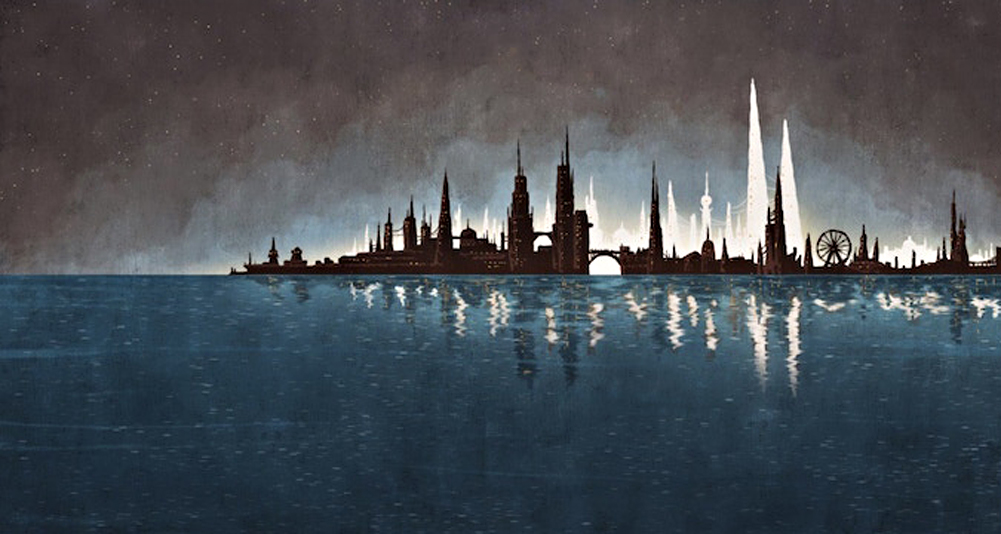
‘Draco Alchemicus’ (2023), illustration by Zé Nuno Fraga
As readers may expect, the fantastical tale ultimately contains universal truths. “Like Spenser’s The Faerie Queene, our poem is an allegory, but the challenges that our characters face are as old as sin and as new as the electrical enchantments of the Internet,” Fulton Brown explained. “The title Draco Alchemicus points to the most potent of the spells that the dragon has cast—the spell of magical and scientific language by which the agents of the dragon seduce and control the people of the City.
“We are writing in verse to break this spell because, of course, we are the people of the City whom the dragon enslaves with its illusions and lies, killing our souls even as it consumes and corrupts our art. Our story is about how evil (the desire to control) has rebranded itself as cure (release, comfort, ecstasy). Sin, like snake oil, is a helluva drug.”

‘Draco Alchemicus’ (2023), illustration by Zé Nuno Fraga
RELATED: Renegade Jean Marc LaPointe Returns For Espionage & A Mind-Blowing Threat In ‘The Saints: Awakening’
It’s an ambitious undertaking but the collaborative effort is in good hands. “Draco Alchemicus is the third major work written by the Dragon Common Room,” Fulton Brown said. “I founded the Dragon Common Room three years ago as a refuge from the ugliness and chaos of the culture wars.” Joining her on the project are Kilts Khalfan, KJ Crilly, Mel Wiggin, and Zé Nuno Fraga.
“Our poem is being illustrated by Zé Nuno Fraga, a comic artist from Portugal, who also draws Catholicomics,” Fulton Brown revealed. “He found me through a blogpost I had written on comics as an Incarnational art.”
“His illustrations are critical to our poem, showing the things we cannot say, even as our poem gives words to the images. The Kickstarter we [ran was] primarily to fund his illustrations. To buy our books and other merch, folks can visit our website, where we also have coloring pages and study guides.”
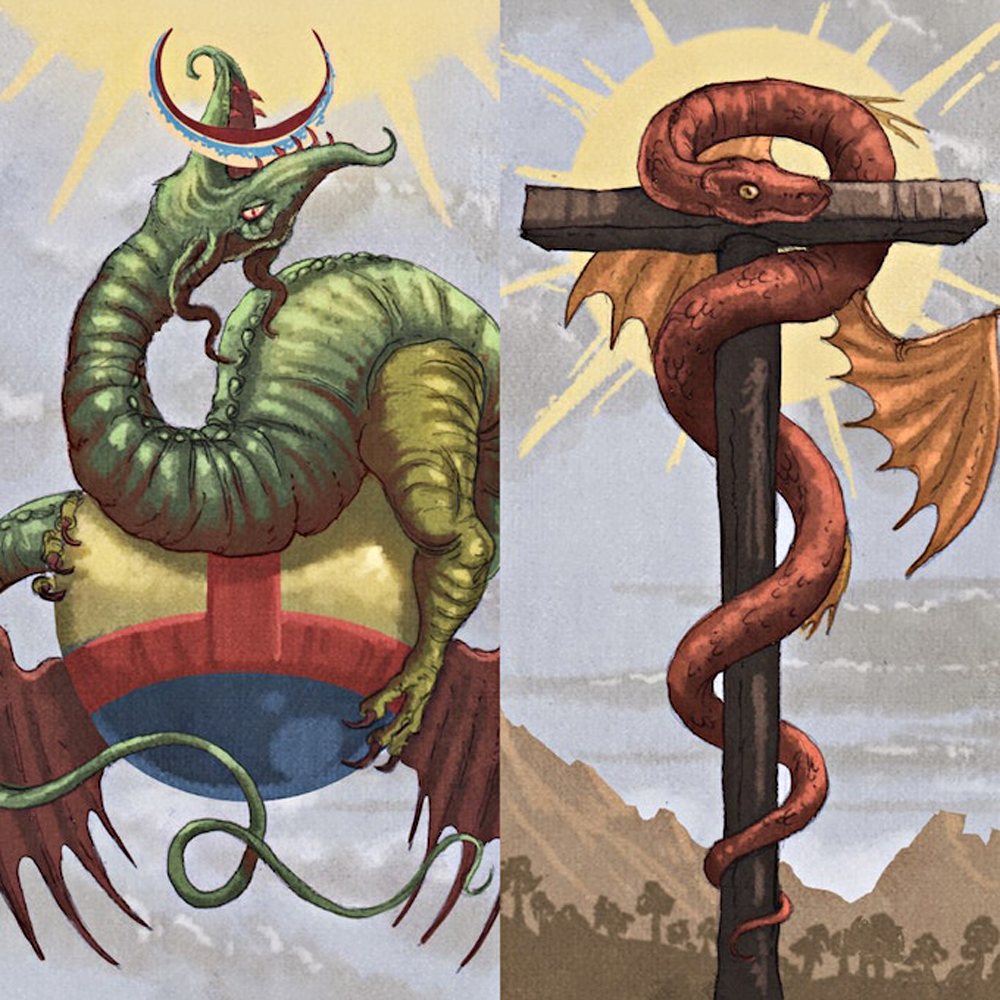
‘Draco Alchemicus’ (2023), illustration by Zé Nuno Fraga
“Complaining about how we have lost the ability to appreciate or create great art is pointless if we don’t train ourselves in the virtue and skills to create our own,” she continued. “The greatest works in the English language—at least, the ones everyone lists when complaining about how nobody reads them—are poetry: Chaucer, Shakespeare, Milton.”
“Want to make art great again? Our mantra in the Dragon Common Room: Learn to scan. Learn to write in iambic pentameter, the meter in which Chaucer, Shakespeare, Milton, Pope, Byron, and Tolkien wrote. Learn meter and rhyme, the patterns and beauty of English, and ‘make still by the law in which we’re made’ by telling stories about dragons and gods.”

‘Draco Alchemicus’ (2023), illustration by Zé Nuno Fraga
RELATED: ‘Ma’am I Am!’ Sure To Delight—Or Enrage—Readers With Its Outrageously Forbidden Tale (EXCLUSIVE)
“I have been teaching at the University of Chicago for almost thirty years,” she added. “In my courses, I often invite my students to do creative projects—stories, art, music, drama—responding to the models we are studying in the course.”
“The work we are doing in the Dragon Common Room takes its inspiration above all from the Middle Ages, particularly the monasteries, where monks and nuns created great syntheses of music, art, architecture, and story-telling in service of the liturgy, the praise of God. Our work is similarly intended as an exercise in praise of the Creator in whose image and likeness we are made, even if we are doing it in English.”
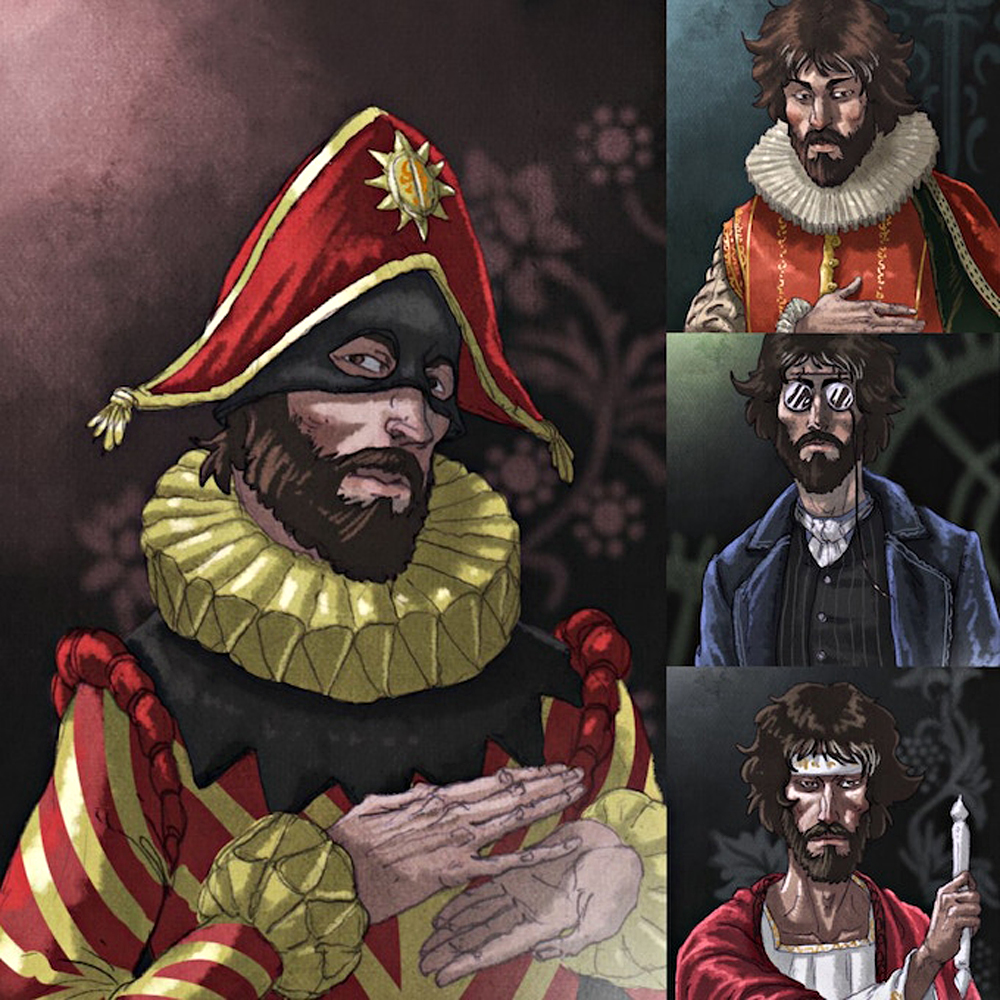
‘Draco Alchemicus’ (2023), illustration by Zé Nuno Fraga
For those interested in learning even more about Draco Alchemicus, there is an FAQ page at the Dragon Common Room website. The book itself should be available for the general public at all major booksellers by December in time for Christmas. Readers can sign up for the Dragon Common Room weekly newsletter to keep watch on that and to get “a bite-size taste” of the poetry that the group offers as well.
Fulton Brown has her own websites too. People can view her academic homepage at the University of Chicago, and visit her separate “not-so-academic blog.”
NEXT: Entertainment Industry Ramps Up Its Hatred Of Christians In Lead Up To Easter
More About:Books Interviews
